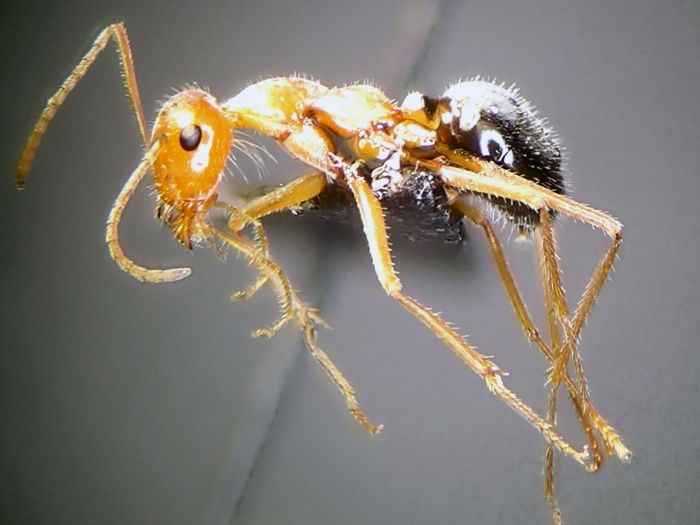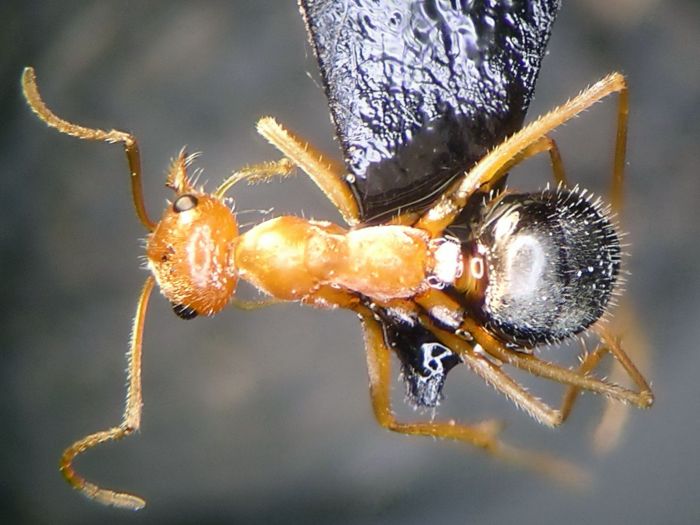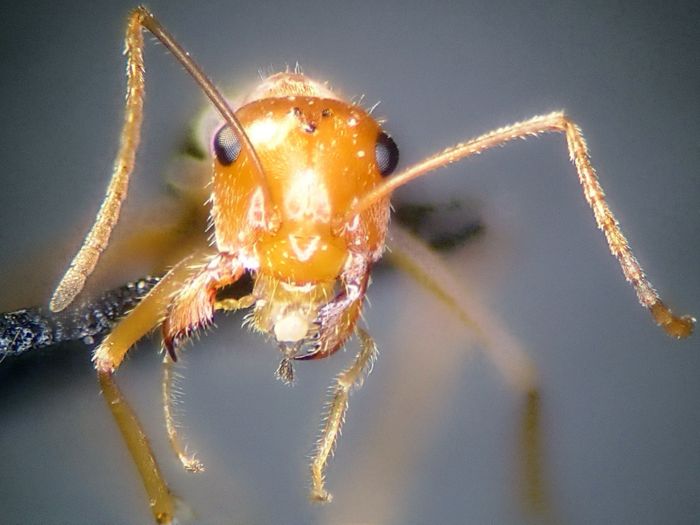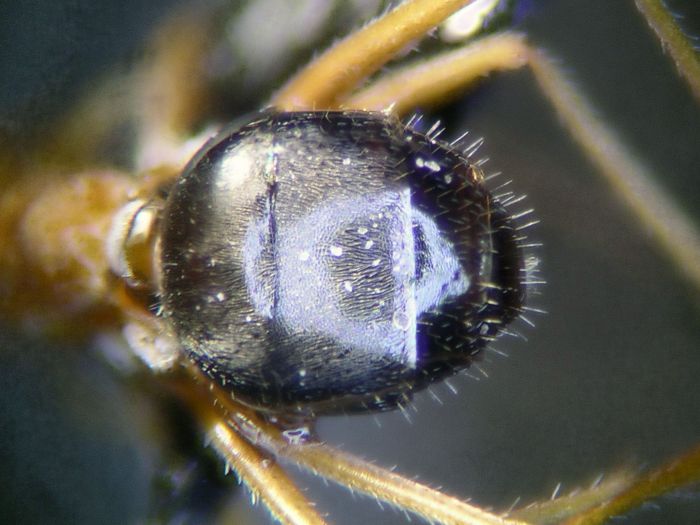I tried keying this out, but can't seem to figure it out at all.
I know this is of the subgenus Endiodioctes.
1.Less hairy species: fewer than 20 erect hairs on malar area in frontal view, usually fewer than 6 (clearly)..... 6
6. Malar area, in frontal view, with six or more erect hairs evenly distributed between eye and base of mandible (clearly)...... 7
7. First three terga uniformly, densely pubescent (can't be this, because third and fourth have absolutely no pubescence at all).
Third tergum apubescent or at least conspicuously less pubescent than first two; (clearly) clypeus slightly shiny, distinctly tessellate; frontal lobes slightly shiny, distinctly tessellate, with scattered coarse punctures and dense micropunctures; HW of majors 1.03-1.63 mm (not sure, but this would be M. intonsus, which does not occur here.)
Other than the color being slightly darker in the images on AntWeb, these look like M. insonsus, but they supposedly are only found in southern Baja California Sur.
I'm stumped.




















